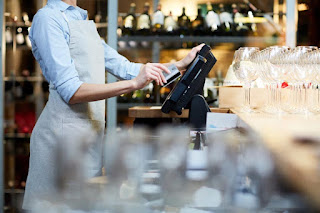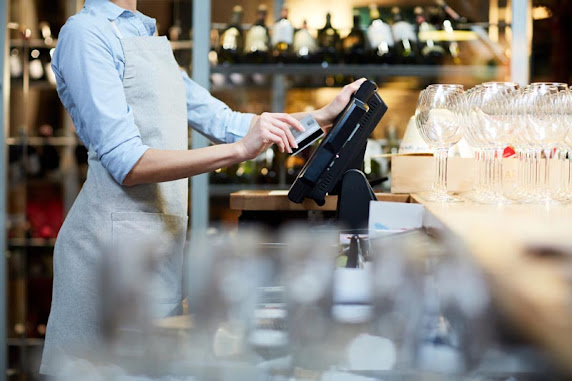Innovation in Online Food Delivery: Learnings from COVID-19
Abstract
The COVID-19 pandemic has forced some restaurants to shift their business models to innovative approaches in digital food ordering services. The willingness to order food delivery online during the COVID-19 pandemic. Peoples' fear of COVID-19 was measured and used as a moderator variable.
Introduction
Some restaurants are altering their business models by implementing rapid innovation in order to confront the changes and challenges of the coronavirus pandemic and to match the demands of this unprecedented scenario. Among the wide range of types of innovation, restaurants are changing their online food delivery offerings by improving product presentations and by providing new services and/or products.
The online food ordering services business has emerged as a relevant channel to reach customers and provide them with higher quality services in these times and is playing a major role in sustaining business. The main advantage of this type of service is that, besides simplifying the ordering process for both the consumer and the restaurant in times of social distancing, it offers restaurants alternative income, retains customers, and enhances the customer experience by providing new delivery channels.
Digital food ordering services have now become more than just a utilitarian alternative when it comes to food consumption. Restaurants are innovating to offer experiential digital food ordering options. However, little is known about this challenge and the role that fear of COVID-19 contagion plays in the decision process so as to properly understand consumer behavior.
This paper aims to study the impact of digital food ordering innovation on new products and services, which aims to enhance the experiential value of digital food ordering services and the consumers' willingness to order during the COVID-19 pandemic. Based on the level of meal preparation and according to the trends observed in the digital food ordering services, three options of innovation in online food ordering services were suggested by a panel of hospitality experts. Each meal option innovates in the product/service to address the challenges posed by the coronavirus pandemic by increasing consumers’ experiential value. This issue is addressed in a survey experiment with four experimental delivery conditions.
This paper is divided into four parts. First, a literature review of the current state of online food ordering services , the experiential value of Online food ordering services, and the influence of COVID-19 on consumer behavior, are explored, leading to the formulation of the hypotheses. Second, the methodology to verify the hypotheses is described. The results obtained are then presented. The paper ends with a discussion of the results, the theoretical and professional implications, the limitations of the study, and future research prospects in the field.
Discussion, implications, and limitations
The COVID-19 pandemic has adversely impacted the restaurant industry and the industry is pivoting to stay afloat during this pandemic.
Online food ordering services aimed at increasing the perceived experiential value on the willingness to order innovative online food ordering services, together with as the moderating role that fear of COVID-19 can play on the willingness to order these innovative options. The results show that digital food ordering services is a broad category that is not restricted to the convenience segment of ready-to-eat food. Innovation in online food ordering services can increase the experiential value evolving toward a ready-to-enjoy concept, thereby influencing consumers' purchasing decisions. The impact of COVID-19 on society influences users’ willingness to order.
While innovation may increase the experiential value of a delivery option, the fear of COVID-19 will still influence consumers’ decisions in various ways. Fear can be seen to favor choice in the case of the unboxing option. Although consumers may prefer to dine with friends in a restaurant rather than at home, such an attractive option becomes even more attractive when fear of COVID-19 increases.
In contrast, the influence of fear is reversed in the case of home chefs, which has a high experiential value. The results suggest that the fear of contagion may extend to the fear of allowing strangers into one's home (despite following rigorous safety, cleaning, and sanitation protocols). Thus, in this situation, fear discourages the intention to order.
The DIY meal kit condition is the only option for which the experiential value increases with respect to the standard delivery, but the utility value decreases. The increase in the experiential value favours the decision to buy, but the fear of the COVID-19 does not exert a significant influence with respect to this option. It seems that other factors, which are perhaps related to the perception of the utilitarian value, would provide a deeper explanation of the intention to opt for this option.
This research has several academic implications. First, this study helps to demonstrate how innovation brings experiential value to Online food ordering services. Furthermore, it sheds some light and broadens knowledge on COVID-19 when it comes to consumer decisions. Thus, it shows that the level of fear experienced by consumers significantly affects their decisions. Consumer behavior, which is always dynamic, can be even more so, depending on the severity perceived at different times of the pandemic. COVID-19, in a way, forces us to learn from the consumer, as something that could be very attractive under normal conditions (outside the COVID-19 pandemic) ceases to be so in times of COVID-19 due to fear. In the medium and long term, these results could help understand consumer behaviour in the face of an upsurge in the disease, which would consequently raise the level of fear of COVID-19.
Moreover, there are several practical implications from this research. Perceived innovativeness has a profound effect on the profitability of a company. This experiment shows participants' perceived innovation in every option of digital food ordering services tested. This could help restaurants to understand how consumers perceive innovativeness from their products/services.
Innovation has so far been directed at the moment of purchase and was essentially technological. However, the findings of this study have shown that innovation in consumption experience is worth paying attention to as well.
It is important to be aware that today's consumer is a fan of an experience demanding enjoyment as well as emotional stimulation. However, for the experience to be a real factor influencing decision-making, it must also ensure the complete safety of the customer, who is very sensitive to the fear of contagion. Many of the changes we have incorporated in our personal interactions to avoid contagion (preference for isolation, the choice to maintain a smaller, more intimate circle of friends, greater awareness of the presence of germs in public areas, more home entertainment) are likely to remain long after the pandemic ends.
Regarding limitations, data collection is based on a convenience sample. There is a common concern that the features of a given convenience sample may diverge from a representative population sample. However, provided evidence that convenience samples can produce treatment effect estimates similar to population-based samples in terms of direction and significance.
Future researchers could examine the effect of these types of innovations in different countries and also in the post-COVID-19 era. COVID-19 is pushing the food and the restaurant industry to anticipate customer concerns, needs and fears, to pivot, to redesign, and to innovate. Once the pandemic has ended, the new habit of working from home may create new opportunities, such as online food ordering services breakfasts, to be investigated.
Innovation will have to respond to the growing demand for online food ordering services. Research is needed to create products that travel well and to develop packaging that preserve food quality.
Cooking at home has increased as a result of the pandemic and consumers are likely to continue doing so post-pandemic. Therefore, DIY meal kits could be a future meal trend to be researched.
6. Conclusion
This paper highlights the importance of exploiting the possibilities offered by rapid innovation that seeks to make the consumption of online food delivery more experiential. For restaurants, and restaurateurs, modifying, updating, pivoting, and innovating their operations in an attempt to meet the current needs of a changing customer and adapting customer experience in the time of COVID-19 and the future will be crucial.
Implications for gastronomy
First, this study helps to demonstrate how innovation brings experiential value to online food delivery. While online food delivery has traditionally been a utilitarian alternative to solve the need for effortless eating, evidence is provided that experiential value is possible by innovating in both product and service. The experiment conducted shows that participants perceive innovation in all online food delivery options tested. This could help restaurants to understand how consumers perceive innovation in their products/services. Secondly, increasing the experiential value of online food ordering services means broadening and extending the offer beyond popular Italian, American, and Chinese dishes. This, in turn, implies the need to develop packaging that travels well and preserves the quality of the food. Covid-19 has a strong impact on consumption habits. Here we show the moderating role of fear in consumer choice. However, in the aftermath of the pandemic, consumption of food at home has increased and consumers are likely to continue to do so after the pandemic. Therefore, DIY meal kits could be a future food trend to investigate.



Comments
Post a Comment